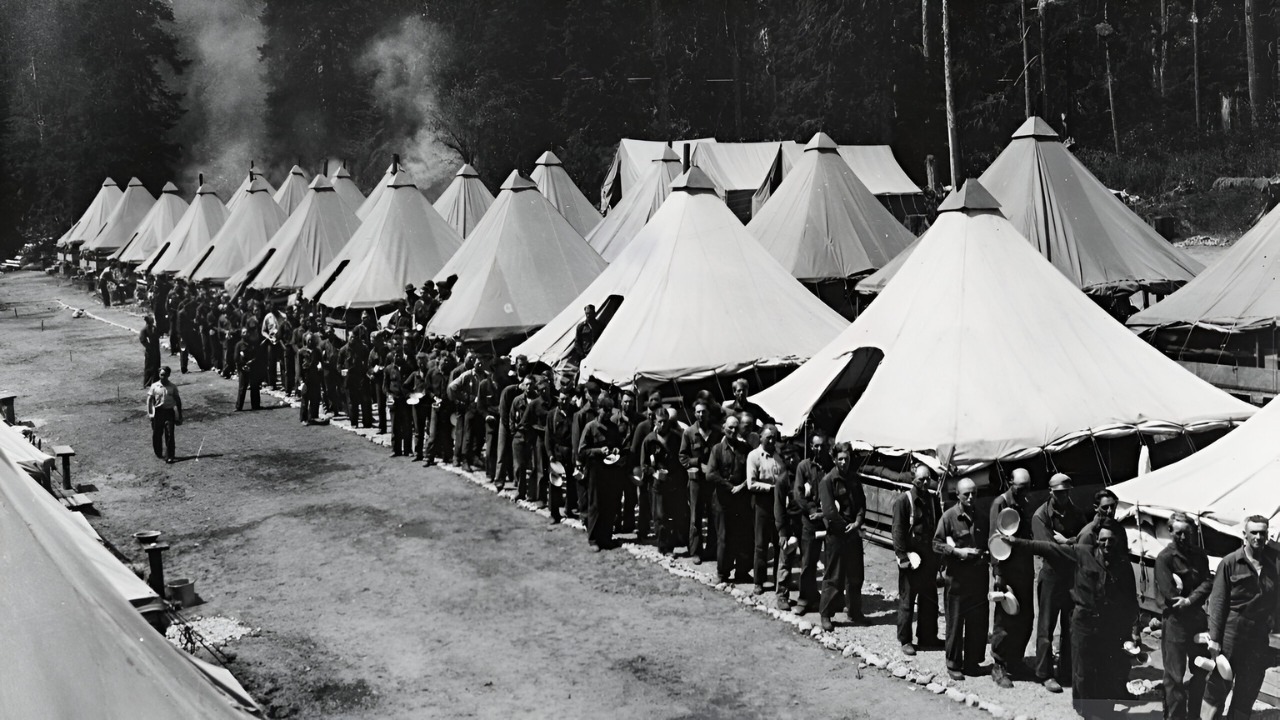Forgotten CCC Camps Of The 1930s

Have you ever heard of the forgotten CCC camps of the 1930s? These camps, part of the Civilian Conservation Corps, played a huge role during the Great Depression. Young men from all over the country joined these camps to work on projects that improved public lands, forests, and parks. They built trails, planted trees, and fought soil erosion. Many of these camps have faded from memory, but their impact remains. Imagine living in a tent or a simple wooden barrack, working hard every day to help the environment and support your family back home. Let's take a closer look at these important but often overlooked pieces of history.
Forgotten CCC Camps of the 1930s
The Civilian Conservation Corps (CCC) played a significant role in American history during the 1930s. These camps provided jobs, improved infrastructure, and preserved natural resources. Many of these camps have faded from memory, but their impact remains.
Hidden Gems of the CCC
Some CCC camps have been overshadowed by more famous sites. These lesser-known camps still hold historical value and offer unique glimpses into the past.
Camp Roosevelt, Virginia
- The first CCC camp established in 1933.
- Located in George Washington National Forest.
- Workers built roads, trails, and recreational facilities.
Camp Rabideau, Minnesota
- One of the best-preserved CCC camps.
- Now a National Historic Landmark.
- Features original buildings and educational exhibits.
Camp SP-2, California
- Located in Yosemite National Park.
- Workers focused on fire prevention and park improvements.
- Many trails and structures still in use today.
CCC Camps with Lasting Legacies
Some camps left behind legacies that continue to benefit communities and the environment.
Camp NP-1, North Dakota
- Located in Theodore Roosevelt National Park.
- Workers built roads, trails, and picnic areas.
- Helped establish the park's infrastructure.
Camp S-52, New York
- Situated in Allegany State Park.
- Workers constructed cabins, roads, and bridges.
- The park remains a popular destination.
Camp BR-1, Arkansas
- Located in Buffalo River State Park.
- Workers built trails, shelters, and recreational facilities.
- The park is now part of the Buffalo National River.
Rediscovering CCC Camps Today
Visiting these forgotten CCC camps can provide a deeper understanding of the program's impact and the hard work of its participants.
Camp NP-2, South Dakota
- Located in the Black Hills.
- Workers focused on reforestation and erosion control.
- Many of their projects still benefit the area.
Camp S-60, Pennsylvania
- Situated in Ricketts Glen State Park.
- Workers built trails, roads, and picnic areas.
- The park is known for its beautiful waterfalls.
Camp SP-5, Oregon
- Located in Crater Lake National Park.
- Workers built roads, trails, and fire lookouts.
- The park remains a popular tourist destination.
Preserving CCC History
Efforts to preserve these camps help keep the memory of the CCC alive and honor the contributions of its workers.
Camp NP-3, Montana
- Located in Glacier National Park.
- Workers built trails, roads, and campgrounds.
- Many of their projects are still in use.
Camp S-70, West Virginia
- Situated in Monongahela National Forest.
- Workers focused on reforestation and infrastructure.
- The forest remains a vital natural resource.
Camp SP-7, Washington
- Located in Mount Rainier National Park.
- Workers built trails, roads, and shelters.
- The park continues to attract visitors from around the world.
Remembering the CCC Camps
The CCC camps of the 1930s played a crucial role in shaping America's landscape and providing jobs during the Great Depression. These camps not only helped build infrastructure but also instilled a sense of purpose and pride in the young men who participated. Many of the trails, parks, and buildings we enjoy today are a direct result of their hard work.
Understanding the history of these camps gives us a deeper appreciation for the natural and historical sites we often take for granted. It also reminds us of the power of community and collective effort in overcoming tough times. Next time you hike a trail or visit a park, think about the hands that built it nearly a century ago. The legacy of the CCC camps continues to benefit us all, standing as a testament to resilience and dedication.

